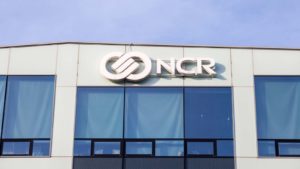Tech stocks have been volatile trades so far in 2021, and we’re liable to see more wild swings in the near future. As the global economy reopens, investors increasingly find themselves in an ambivalent position where they need to choose between cyclical “old economy” stocks and high-growth tech stocks.
Many tech names have seen occasional pullbacks over the past few months. Yet the NASDAQ 100 index, up over 14% so far in the year, has also hit a new all-time high in recent days. And this continuous growth is precisely why the tech sector presents compelling buying opportunities. Today we’ll discuss some of the best tech stocks to buy in July and hold for the long run.
As innovation always plays a crucial role in promoting growth, tech names will continue to be the primary growth driver behind the stock market.
Here are 7 tech stocks to buy with breakout potential for the second half of the year:
- Coupa Software (NASDAQ:COUP)
- Global X Millennials Thematic ETF (NASDAQ:MILN)
- KAR Auction Services (NYSE:KAR)
- NCR Corporation (NYSE:NCR)
- Ping Identity Holding (NYSE:PING)
- Pinterest (NYSE:PINS)
- ProShares Online Retail (NYSE:ONLN)
When it comes to technology stocks, it’s vital to understand that numbers aren’t everything. Tech shares promise powerful upside potential, as they are unique in their ability to grow rapidly and transform a new idea into a golden goose. But lucrative returns do not mean that the market is risk-free. Readers need to be cautious before investing in tech stocks, as higher growth potential comes with higher risk. Tech stocks tend to plummet quickly if they deliver results below market expectations.
Tech Stocks to Buy with Breakout Potential: Coupa Software (COUP)

52-week range: $215.00 — $377.04
San Mateo, California-based Coupa Software is a cloud-based business finance management platform that provides companies with more control and visibility over how they spend money. Coupa connects buyers with suppliers and helps buyers save money by improving procurement, expense management and payments.
The company released 2022 first-quarter results in early June. Total revenue grew 40% year-over-year (YOY) to $167 million. Adjusted net income was $5 million, compared to $14.5 million for the same period last year. Adjusted EPS came in at 7 cents, compared to 20 cents for the prior-year quarter. Adjusted free cash flow stood at $30 million.
“During the first quarter, we delivered record revenue, generated meaningful free cash flows, and added dozens of new customers to the Coupa Community,” remarked CEO Rob Bernshteyn.
Coupa is a growth stock that has managed to increase full-year revenue by more than 38% for the past five years. The company collects spend data from its platform to provide artificial intelligence (AI)-powered suggestions. Thus, the quality of prescribed insights is likely to improve as more customers join the platform. The company boasts a solid endorsement from International Data Corp, which nominated Coupa as a leader in six different markets, from spend analysis and procurement to supplier relationship management and sourcing.
COUP stock is currently hovering around $251. Year-to-date (YTD), the stock is down 26%. The stock currently trades more than 30% lower than its 52-week high in mid-February. The current P/S ratio stands at 29.98. Interested investors could find value at these levels.
Global X Millennials Thematic ETF (MILN)

52-Week Range: $27.89 — $44.02
Dividend Yield: 0.13%
Expense Ratio: 0.5% per year
Millennials make up the generation born between 1980 and 2000. The Global X Millennials Thematic ETF invests in businesses most likely to benefit from their rising spending habits. Fund managers select businesses on various criteria, such as demographics and purchase behavior. Data on spending habits extends to housing, food, travel, entertainment, education, employment, mobility, clothing, health, fitness and financial services.
MILN has 84 holdings and tracks the returns of the Indxx Millennials Thematic Index. The fund started trading in 2016 and currently holds around $207 million in net assets. Consumer Discretionary, Communication Services and Information Technology make up 43.4%, 28.2% and 19.6% of its holdings, respectively.
Approximately 35% of those holdings are in the top ten stocks. The Fund’s top five holdings include Intuit (NASDAQ:INTU), Nike (NYSE:NKE), Alphabet (NASDAQ:GOOGL,GOOG), Apple (NASDAQ:AAPL) and Paypal (NASDAQ:PYPL).
MILN has returned almost 50% in the past 12 months. The fund hit a record high value of $44.02 on July 13. It currently hovers around $43 territory, up 15.5% YTD. Interested readers could regard potential dips as a buying opportunity.
KAR Auction Services (KAR)

52-week range: $13.41 — $20.85
Carmel, Indiana-based KAR Auction Services offers the complete package for wholesale-used car transactions. Its services comprise auctions, financing, repossessions, repairs, transportation, warranty and inventory services.
Kar released first quarter 2021 results in early May. Revenue came in at $582 million, down 10% YOY. Net income increased to $51 million, or 25 cents per diluted share, compared with $3 million, or 2 cents per diluted share, in the year ago quarter. KAR ended the quarter with $759 million in cash and equivalents.
CEO Eric Loughmiller cited, “Our results for the first quarter were much improved over the fourth quarter despite continued supply constraints.”
At the height of the pandemic, KAR took its auction services digital in April 2020. That’s been a win-win for both the group and its customers. Online auctions have provided buyers access to more inventory, while sellers have gained a more extensive buyer base. In addition, this digital process has made the company’s business more efficient, leading to a significant decline in the cost of sales.
KAR stock currently hovers slightly below $16.50 territory, down 12% YTD, though it has gained more than 17% over the past 12 months. Forward P/E and P/S ratios stand at 19.12 and 1.00, respectively. A decline toward $15 would improve the margin of safety.
NCR Corporation (NCR)

52-week range: $16.64 — $50.00
Atlanta, Georgia-based NCR designs and services automated systems. The company is the largest global vendor of ATMs. It also sells point-of-sale (PoS) terminals, self-service check-out systems for retail stores and self-check-in kiosks for airlines and hotels.
The company reported first-quarter results in late April. Revenue of $1.54 billion meant an increase of 3% YOY. Net income went up by 30% to $30 million. Non-GAAP diluted EPS for the quarter stood at 51 cents, up 65% YOY. Free cash flow was $98 million, compared to an outflow of $20 million in the prior-year period.
CEO Michael Hayford remarked:
“Our first-quarter results represent a great start to the year with increased momentum in our shift to NCR-as-a-Service. Our performance included strong recurring revenue growth, margin expansion, and cash flow generation.”
NCR’s retail-oriented technology for retail and hospitality businesses has become a key long-term growth driver over the past few years. Analysts concur that the company’s focus on software and services should play a crucial role in future growth.
NCR stock trades around $44.50, up 19% YTD and 145% in the past 12 months. The forward P/E ratio stands at 17.48, while the stock trades at 0.93x its current sales. Growth-seeking tech investors can buy NCR stock at the current price and hold them for the long term.
Ping Identity (PING)

52-week range: $19.97 — $37.80
Identity management group Ping Identity enables secure access to any application, service, or Application Programming Interface (API) from any device. The platform utilizes AI and machine learning to analyze the device, application, network and user behavior data to make authentication and security control decisions.
The company released first-quarter financial results in early May. Revenue grew 12% YOY to $69 million. Adjusted net income came in at $3.7 million, compared to $4.6 million in the prior-year quarter. Adjusted net income per diluted share stood at 4 cents. Free cash flow was $19.5 million, up from $9.6 million in the prior-year quarter.
On the results, CEO Andre Durand said, “The demand environment and pipelines have clearly improved and drove an annual recurring revenue acceleration, much stronger revenue growth and record cash flow generation.”
With the advance of cloud computing over the past few years, Ping has been updating its portfolio to offer identity security solutions in various cloud and on-premises settings. In addition, the company has improved its cloud-based technology over the last few years to gain market share in the cloud identity management market, estimated at $25 billion in 2020.
PING stock hovers slightly above $22 territory, down 22% YTD and currently trading 40% lower than its peak price in mid-February. PING stock trades at a P/S ratio of 7.30. For comparison, its peer OKTA (NASDAQ:OKTA) trades at over 34.5x sales. Given its improved cloud-based offering, investors should keep PING stock on their radar.
Pinterest (PINS)

52-week range: $23.56 — $89.90
San Francisco, California-based Pinterest is known as a product and idea discovery platform. Users share ideas on everything from cooking recipes to clothing and travel destinations. The platform boasts a predominantly female audience, at roughly two-thirds of its more than 478 million monthly active users (MAUs). Pinterest generates revenue by selling digital ads and is currently rolling out more e-commerce features.
The online platform reported first-quarter results in late April. Total revenue grew 78% YOY to $485 million. Global MAUs grew 30% YOY to 478 million. Adjusted net income came in at $79 million, or 11 cents per diluted share. Cash and equivalents ended the period at $914 million.
CEO Ben Silbermann remarked, “This quarter, we continued strong growth internationally, including our recent launch of advertising in Brazil, and made significant progress with shopping, making it easier for people to discover and buy products they find on Pinterest.”
Pinterest has been enjoying robust growth, especially in overseas markets. The platform is particularly popular with younger users, a very valuable demographic for advertisers. Promising engagement from younger users has led many bullish investors to believe that the business can grow even bigger. The company forecasts Q2 revenue to grow around 105% YOY, global MAUs to grow in the mid-teens and U.S. MAUs to stay flat on a YOY basis.
PINS stock currently hovers at $70, up 6% YTD and having gained 185% in the past 12 months. Forward P/E and current P/S ratios stand at 74.07 and 22.30, respectively. Potential buyers could regard a decline toward the $65 level as a better entry point.
Proshares Online Retail ETF (ONLN)

52 Week Range: $53.95 — $93.45
Expense Ratio: 0.58% per year
The ProShares Online Retail ETF invests in retailers that principally sell online or through other non-store channels. ONLN, which currently has 25 holdings, tracks the returns of the Proshares Online Retail Index. The fund started trading in 2018 and currently has around $1.18 billion under management.
The top 10 holdings constitute almost 60% of the fund. A quarter of the fund’s total assets are invested in Amazon (NASDAQ:AMZN). Other top names in the roster include Alibaba (NYSE:BABA), Newegg Commerce (NASDAQ:NEGG), Stamps.com (NASDAQ:STMP) and Doordash (NYSE:DASH).
Year-to-date, ONLN is up more than 4%. It has soared almost 37% over the past 52 weeks. Its P/E and P/B ratios stand at 55 and 7.47, respectively. Investors who are looking for exposure to Amazon as well as other global online retailers could find better value around $75, or even below.
On the date of publication, Tezcan Gecgil did not have (either directly or indirectly) any positions in the securities mentioned in this article.
Tezcan Gecgil, Ph.D., has worked in investment management for over two decades in the U.S. and U.K. In addition to formal higher education in the field, she has also completed all three levels of the Chartered Market Technician (CMT) examination. Her passion is for options trading based on technical analysis of fundamentally strong companies. She especially enjoys setting up weekly covered calls for income generation.
